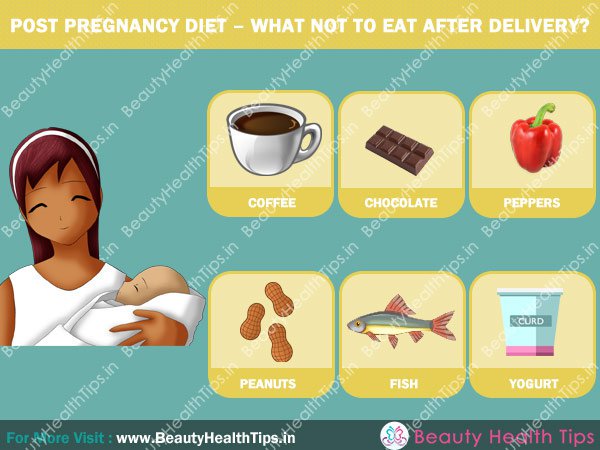Getting pregnant can be a challenge in couples and it’s important that you have an idea about the days when you are most likely to conceive. According to studies, about 6 – 10% of women in the age 15 to 44 are completely infertile due to various causes, congenital or acquired.
However, if you have been trying to conceive and failed this doesn’t necessarily mean you are infertile as there are other factors that reduce the chances of getting pregnant mentioned in a section below. In order to conceive, the following 4 conditions (A, B, C and D) help give the dates when you are highly fertile and also the likelihood of conception:
[su_accordion]
[su_spoiler title=”How can I know that I am ovulating?” open=”no” style=”default” icon=”plus”]You can calculate your ovulation period by using different observation methods such as using a calendar, examining basal body temperature, cervical mucus, or using OTC tools.
[/su_spoiler] [su_spoiler title=”Do all women ovulate on the 14th day every month after their menstrual cycle begins?
” open=”no” style=”default” icon=”plus”]The 14th day is taken as an assumed time for ovulation based on the average 28-days fertility cycle. However, women may have shorter or longer fertility cycles. Therefore, the ovulation period for them will also differ.[/su_spoiler][su_spoiler title=”What is my fertility window after ovulation?” open=”no” style=”default” icon=”plus”]An egg usually survives only 24 hours after being released and it takes some time for the sperms to swim to the fallopian tubes to fertilize the egg and ensure conception. Sperms can survive for 3 to 5 days inside the vagina; so, the fertility window is about 3 to 5 days before ovulation and 1 to 2 days after that[/su_spoiler][su_spoiler title=”Can ovulation occur during an ongoing period?” open=”no” style=”default” icon=”plus”]You should note that menstruation is a follow-up process after ovulation if the ovulated egg is not fertilized. However, some women may notice minor spotting during ovulation which should not be confused with a regular period.[/su_spoiler][su_spoiler title=”Is it possible that a woman has a period without ovulation?
” open=”no” style=”default” icon=”plus”]Yes, sometimes a woman may have a period without ovulation depending on the lower levels of hormones that trigger the release of the egg.[/su_spoiler]
[/su_accordion]
A. Know your menstrual cycle
Most women have a menstrual cycle which ranges from 21 days to 35 days long and the average is 28 days long. In order to know your cycle, you plot on the calendar the days when you have menstrual bleeding. In most cases you notice that the days follow a regular pattern in subsequent months. This is a good sign because a regular menstrual cycle means there is also a regular ovulatory cycle which makes it easier to zoom on the dates when you are most fertile.
The first day of the menstrual cycle is when you notice the first drops of menstrual blood (day 1). This bleeding continues usually up to day 4 and during this period a new egg will be developing in the ovary. The uterine lining is shed during bleeding and a new lining forms. It continues to develop in anticipation of implantation of a newly formed embryo.
B. Know the lifespan of the egg and the sperm
- The egg
You know that for conception to occur there has to be fertilization between an egg and a sperm. The egg, which is released during ovulation, can survive up to 2 days. Ovulation is the release of an egg into the tube/oviduct where fertilization takes place. This process of ovulation takes place around the 14th day of a 28 day menstrual cycle, calculated by subtracting 14 from the date when the next period starts. This means if you have a 27 day cycle, ovulation takes place on the 13th day of your cycle. (27-14)
Other ways to increase accuracy of ovulation date
- You can pinpoint the ovulatory event by taking daily body temperature each morning. When ovulation occurs there is a spike in temperature and this helps give a more accurate date.
- There may be an increase in watery secretions around the time of ovulation. The cervical secretions also become watery to allow the sperm to penetrate easily.
- A pain in one side of the lower abdomen may signify ovulation (ovulatory pain or Mittelschmerz). The release of an egg involves rupture of the ovarian lining as the egg moves to the tube.
- You may also experience increased libido around ovulation
- With current technology there are apps that you can use to record your menstrual cycle easily. You get a notification on the date when ovulation is expected to occur but for those who want to do it all natural, follow the methods above.
- The sperm
The sperm on the other hand, once deposited in the female reproductive tract during intercourse, can survive up to 5 days. It has to swim all the way up to the oviduct where the egg waits for fertilization to take place. Fast swimming sperm take only hours to reach the egg while the sluggish ones take days.
C. Bring the two together
Now that you know ovulation is when the egg is released and it’s a fixed date (see calculation above), the timing of the sperm has to be right. This allows it to fertilize the egg before the egg becomes non-viable. For optimum results, when you have calculated the date of ovulation you need to start having intercourse 3 days before ovulation up to the date of ovulation. Thereafter the chances of conceiving drop to zero rapidly.
Irregular menses
If your menstrual cycle is not regular, it’s difficult to accurately determine the dates when you have high chances of conceiving. In addition, if the problem is chronic, you have to see your doctor who can rule out any disorders like the ones described below. Sometimes the menstrual cycle needs to be reset so that it is regular and more predictable.
D. Eliminate the risk factors
The following risk factors can reduce your chances of conceiving. Certain medical conditions may be underlying so part of the management involves a trip to the clinic so that an evaluation can be done to rule out these factors.
- Abnormal weight
It’s important to maintain a healthy Body-Mass Index (BMI), which is a relation between your weight and your height. Being overweight/obese (BMI >25) or being underweight (BMI<18.5) causes menstrual abnormalities which reduces your chances of falling pregnant.
- Age
Although the reproductive age group is 15-44 years, as you go above 40 years the fertility levels tend to go down. This is the perimenopausal period and chances of conception are reduced. The number of quality eggs tends to diminish as well and remedies that stimulate ovulation are employed to boost your fertility levels.
- Hereditary
Sometimes the cause of difficulties in conception is not within your control. If your mother had fertility problems chances are high that you may follow the same trend.
- Certain contraceptives
Normally when you stop taking contraceptives you should become fertile. However, if you have been using injectable contraceptives like Depo Provera there can be a delay in return of fertility. This can stretch to a year and reassurance is what you need if that’s the case.
- Thyroid disease
If you have thyroid disorders, these affect fertility and need to be stabilized first so that your menstrual cycle is under control. If these conditions go unnoticed, you may end up spending a fortune in costly procedures to address the fertility problem.
- Smoking
This is obviously what you don’t need near you if you are planning to get pregnant. Smoking reduces your chances of getting pregnant and affects blood vessels. A poor blood supply to the highly vascularised uterus means the processes leading to conception are greatly affected. Ditch the cigarette if you want to conceive.
- Lactation or Breastfeeding
In some cases you may want to have children spaced as close together as possible. Although close spacing is not recommended by health practitioners, your chances of conceiving while lactating are reduced due to certain hormonal settings in your body. Keep in mind that your body needs ample time (at least 18 months) to fully recover and prepare for the next pregnancy.
- Stress
Have you been stressed of late? Know that stress reduces fertility and can create a vicious cycle especially if you really want to conceive. Relax, do breathing exercises, attend a stress management class and release the negative energy. The more you relax the more your chi flows inside you harmoniously. As a result, this boosts your fertility levels.
- Previous pelvic disease
If you have been treated for sexually transmitted diseases in the past keep in mind that they may leave permanent scarring of the reproductive system. This may lead to blocked tubes, inflamed uterine lining of the endometrium or damage to ovaries. Consequently, you may face difficulties with conception.
- Vigorous workout
We have mentioned about the need to maintain a normal BMI above. However as you do your workout to keep your body in shape, don’t go to an extreme. Vigorous exercises trigger stress hormones in the body and negatively affect fertility. You start noticing disturbances in the menstrual cycle and difficulties conceiving.
- Subfertility of the partner
It’s important to involve your partner all the way when you want to conceive. Men have factors that can reduce sperm count, sperm motility or proper reproduction:
- Tight clothing affects thermo-regulation which is essential for optimum sperm production
- Frequent warm baths in the tub reduce sperm count as a higher temperature is not ideal for sperm production.
- Medical conditions like premature ejaculation hinder proper reproduction
- Use of artificial lubricants may kill sperm
- Psychological disorders like performance anxiety may also affect conception
The perfect timing
You can only time the conception right when you have gone through (A) (B) (C) and (D) above because for conception to occur there has to be an egg and a sperm. When all these conditions have been fulfilled, you can confidently calculate dates when you have high chances of conception. It’s a myth that you can get pregnant any time of the month so why not start charting your menstrual cycle so that you can have a perfect pregnancy.
Conclusion
Note that these calculations can be applied on any menstrual cycle which is regular. As long as there are no factors which hinder conception, your chances of conceiving will be extremely high. Don’t despair when it seems to take long because by definition, subfertility is only suspected after about 6 months of attempting to conceive.





